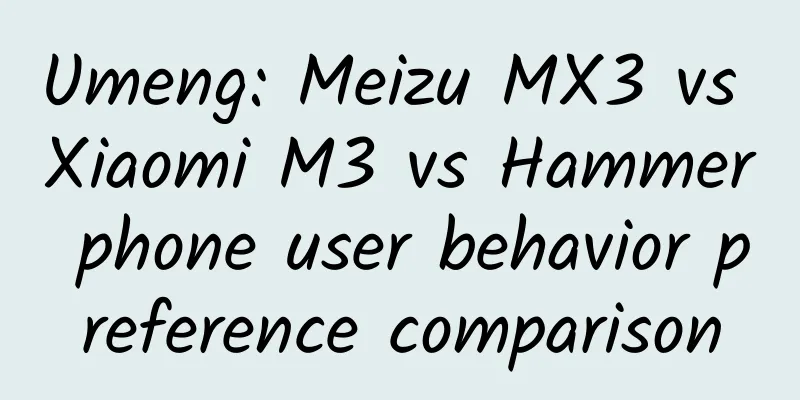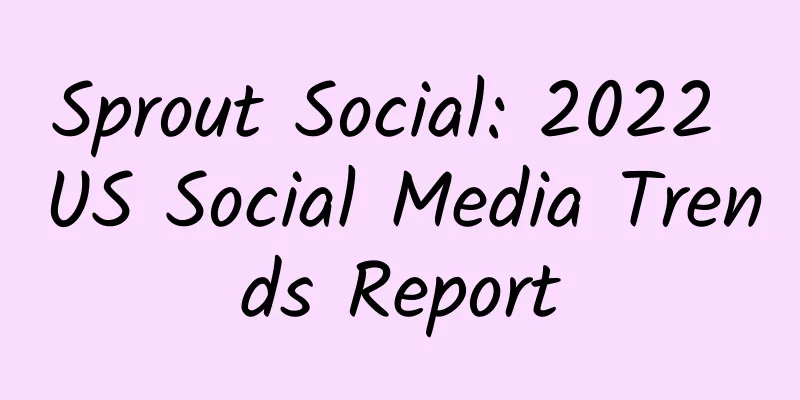Umeng: Meizu MX3 vs Xiaomi M3 vs Hammer phone user behavior preference comparison

|
On September 2, 2014, Meizu held a press conference to announce its latest flagship model MX4. Compared with the highly anticipated Hammer phone and Xiaomi M4 a few months ago, the communication method of the new generation of mobile phone brands has basically taken shape. In another week, Apple's latest press conference will also be held, and the release of the large-screen iPhone 6 is almost certain. Behind the brand concept and parameter numbers, what kind of users are supporting the brand image of the mobile phone? Umeng combined the user behavior data from June to August 2014, analyzed the user characteristics of several flagship devices, and found some interesting conclusions. Geographical distribution: High concentration in first- and second-tier cities In general, these mobile phones are more concentrated in first- and second-tier cities. Even the Redmi mobile phone, which has the lowest price and is most widely distributed in third-tier and lower cities, has a higher than average user ratio in first- and second-tier cities. From the perspective of user geographical distribution, Xiaomi and Meizu have similar distributions. In first- and second-tier cities, they are likely competing for the same type of people. Umeng pointed out in its mobile internet market report in the first quarter of 2014 that brand concentration is the highest in first-tier cities, and users have the strongest brand awareness when choosing devices; while in third-tier and lower-tier cities, Android brand concentration is low, and users consider price more. Therefore, in order to impress users in first-tier cities with the strongest purchasing power, mobile phones must make efforts in brand and personality shaping. iPhone users love photography, while Xiaomi and Meizu users love games Domestic users switch to Apple every 1-2 generations, and the large-screen 6th generation will snatch Android users Judging from the frequency of release, the flagship products of various brands are updated every 10-12 months. Domestic iPhone users usually replace their devices every 1-2 generations. For example, after the launch of iPhone 5s and 5c, the market share of iPhone 4 dropped the fastest. However, due to the large price difference, the market division of the above brands is still very clear overall, and the ratio of active iOS devices to active Android devices in China has remained stable at about 1:2. But this pattern may be broken by the upcoming iPhone 6: If the iPhone 6 is really a large-screen device as rumored, it will seize some of the users of high-end large-screen Android devices in the future, because Android users with the same spending power want to try out new products on the iOS platform; if the old devices (iPhone 5s and 5c) are sold at a reduced price at the same time, like the previous iPhone 4, then the iPhone may attract more smartphone users from competitors with its more diversified product line. |
>>: Rumor debunked: Drinking too much milk tea will clog your blood vessels?
Recommend
What should I do if I bleed due to low progesterone?
Progesterone is a female-specific hormone that he...
What are the uses of scrapped tires? What are the standards for scrapping tires?
Tires are the guarantee for the normal driving of...
What are the measures to prevent pregnancy?
Measures to prevent pregnancy include using condo...
Do women need to fast when checking their thyroid function?
When people catch a cold, they will feel particul...
Symptoms and treatment of kidney yang deficiency in women
If women do not take good care of themselves, the...
Is menstrual blood clots a good thing?
Women often find that their menstruation is accom...
My girlfriend's vagina is very loose
Vaginal relaxation in women is a very common phen...
How to prevent uterine fibroids in women
Uterine fibroids are one of the common gynecologi...
What is the meaning and symbol of chrysanthemum? In what season do chrysanthemums bloom?
Chrysanthemum tea has the effects of clearing awa...
What is the cause of the enlarged uterus? Pay attention to uterine hypertrophy
Patients with uterine hypertrophy will experience...
How to regulate less menstrual flow after childbirth
A small amount of menstrual flow after childbirth...
How long after giving birth is it appropriate to use a belly band?
Many women are eager to lose weight after giving ...
Low-grade squamous lesions plus HPV negative
Cervical cancer is a common malignant tumor in wo...
Pregnant women dream of eating fish
What does it mean when a pregnant woman dreams of...









